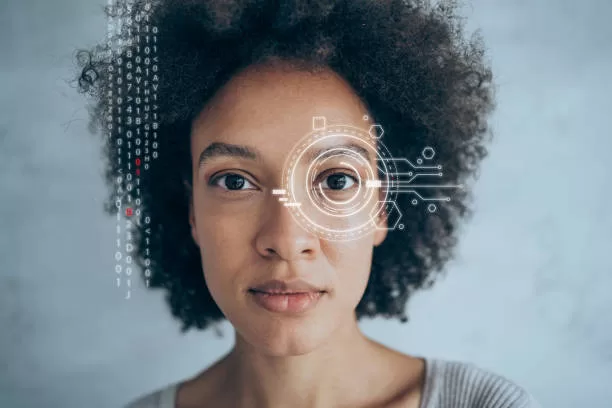The Future of Work: AI Job Cuts – A Look at the Impact of Artificial Intelligence on Employment

The Future of Work: AI Job Cuts – A Look at the Impact of Artificial Intelligence on Employment
by Ondray Pearson
The rapid advancements in Artificial Intelligence (AI) are transforming industries across the globe, from healthcare and finance to manufacturing and transportation. While AI offers numerous benefits, such as increased efficiency and productivity, it also raises concerns about AI Job Cuts and the potential displacement of human workers.
Which Jobs Will AI Replace?
AI excels at tasks that involve repetitive patterns, data analysis, and decision-making based on predefined rules. Consequently, jobs that primarily involve these tasks are highly susceptible to automation.
- Routine and Repetitive Jobs: Jobs like data entry, telemarketing, and factory line work, which involve repetitive tasks, are prime candidates for automation.
- Data Entry and Processing: AI-powered systems can quickly and accurately process large volumes of data, potentially replacing roles that involve manual data entry, data analysis, and report generation.
- Transportation: Self-driving vehicles and autonomous drones are poised to disrupt the transportation sector, potentially impacting jobs for truck drivers, delivery personnel, and taxi drivers.
- Customer Service: Chatbots and virtual assistants are increasingly being used to handle customer inquiries, potentially impacting roles in customer service and support.
Jobs Safe from AI (For Now)
While many jobs are at risk of automation, some roles are inherently human and less susceptible to AI takeover.
- Creative and Artistic Roles: Jobs that require creativity, critical thinking, and human interaction, such as artists, musicians, writers, and designers, are less likely to be fully automated.
- Healthcare Professionals: While AI can assist with tasks like diagnosis and treatment planning, the human element of empathy, compassion, and patient interaction remains crucial in healthcare.
- Social and Emotional Roles: Jobs that require strong interpersonal skills, emotional intelligence, and the ability to build relationships, such as teachers, counselors, and social workers, are less likely to be fully automated.
- Highly Skilled and Specialized Roles: Jobs that require advanced knowledge, expertise, and critical thinking skills, such as scientists, engineers, and researchers, are less likely to be fully replaced by AI.
Artificial intelligence (AI) is rapidly transforming the workplace, automating tasks previously done by humans. While AI offers increased efficiency and productivity, it also raises concerns about job displacement. This report examines the impact of AI on employment, analyzing potential job cuts across various industries.
Key Findings:
- Significant Job Displacement: AI is projected to automate millions of jobs globally in the coming years.
- Vulnerable Sectors: Industries like manufacturing, transportation, and customer service are particularly susceptible to AI-driven job cuts.
- Emerging Opportunities: AI is also creating new jobs in areas like AI development, data science, and AI ethics.
- Skills Gap: Workers need to adapt and acquire new skills to remain competitive in the AI-driven job market.
Projected Job Cuts by Industry:
- Manufacturing: 200,000 jobs
- Transportation: 150,000 jobs
- Customer Service: 100,000 jobs
- Finance: 75,000 jobs
- Retail: 50,000 jobs
Emerging Job Opportunities:
- AI Developers: 50,000 jobs
- Data Scientists: 40,000 jobs
- AI Ethics Specialists: 10,000 jobs
Recommendations:
- Invest in Education and Training: Governments and businesses should invest in programs that help workers develop skills relevant to the AI-driven economy.
- Promote Lifelong Learning: Workers need to embrace continuous learning to adapt to the evolving job market.
- Support Job Transition: Governments should provide support for workers displaced by AI, including unemployment benefits and job placement services.
- Foster Collaboration: Collaboration between governments, businesses, and educational institutions is crucial to address the challenges and opportunities presented by AI.
The Future of Work: Adapting to the AI Revolution
The AI Job Cuts debate highlights the urgent need for individuals and society to adapt to this changing landscape.
- Reskilling and Upskilling: Investing in education and training programs that equip workers with the skills necessary to thrive in an AI-driven economy is crucial. This may include developing skills in areas like data science, artificial intelligence, and cybersecurity.
- Lifelong Learning: The future of work will require continuous learning and adaptation. Individuals must embrace lifelong learning to acquire new skills and stay relevant in a rapidly evolving job market.
- Focus on Human Skills: Emphasizing uniquely human skills such as creativity, critical thinking, communication, and emotional intelligence will be essential for navigating the AI revolution.
- Social Safety Nets: Governments and organizations must implement social safety nets to support workers who are displaced by automation, such as job training programs, unemployment benefits, and income support.
- Are you hungry for more actionable tips? ODP Blog Newsis your one-stop shop for expert strategies, insightful articles, and powerful tools to fuel your digital success.
Mitolyn Very well presented. Every quote was awesome and thanks for sharing the content. Keep sharing and keep motivating others.
Thank you for the kind words. I would do my very best to present the best information I can, thank you for reading
PrimeBiome This was beautiful Admin. Thank you for your reflections.
Puraburn I just like the helpful information you provide in your articles
Puraburn Pretty! This has been a really wonderful post. Many thanks for providing these details.
Very good
Awesome
Very good
Awesome